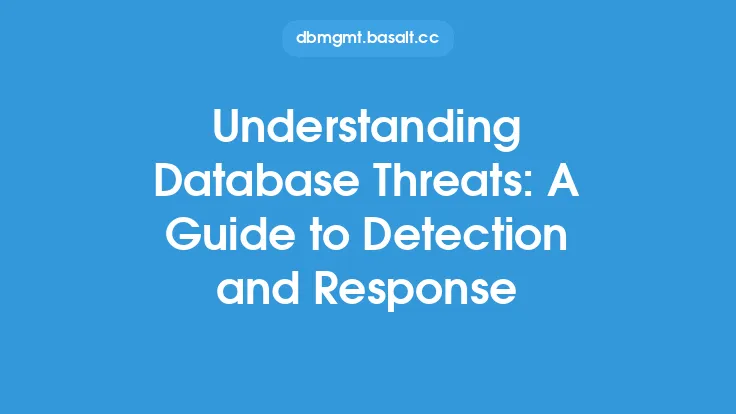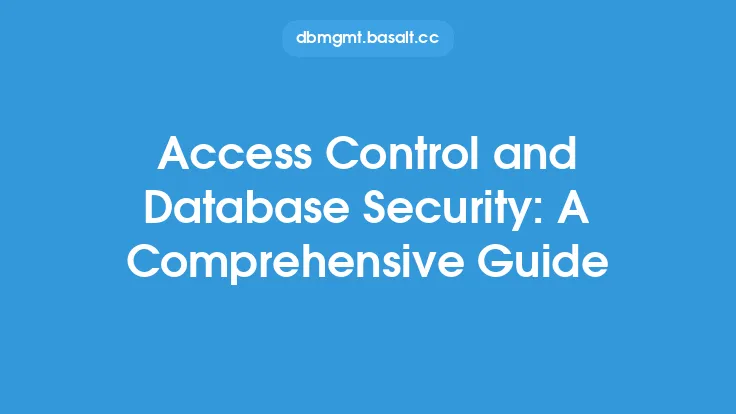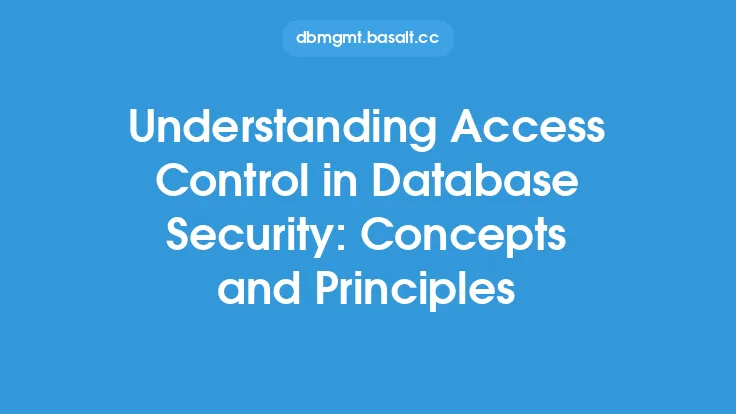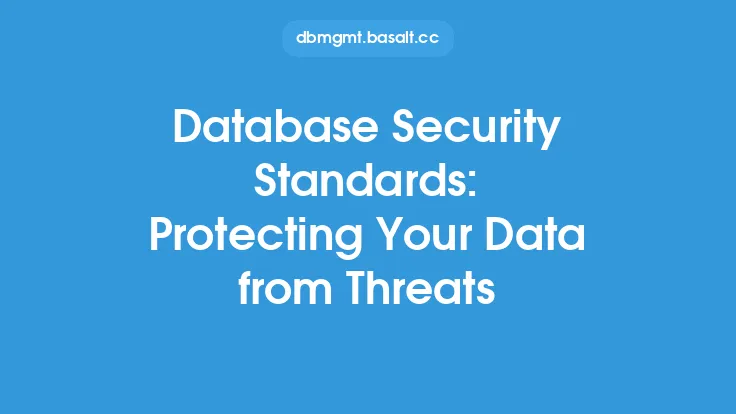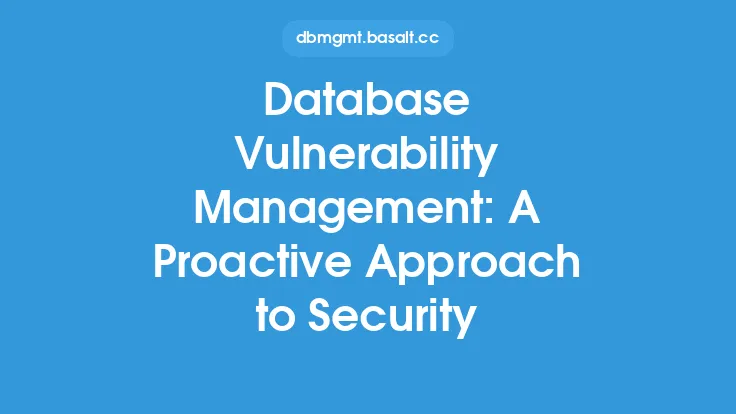Database security is a critical aspect of any organization's overall security posture, as databases often contain sensitive and valuable data. One key component of database security is monitoring, which involves tracking and analyzing database activity to identify and respond to potential security threats. Effective database security monitoring is essential for detecting and preventing unauthorized access, data breaches, and other malicious activities.
Introduction to Database Security Monitoring
Database security monitoring involves the use of various tools and techniques to track and analyze database activity, including user authentication, data access, and system changes. The goal of database security monitoring is to identify potential security threats in real-time, allowing for swift response and mitigation. This can be achieved through a combination of automated tools and manual analysis, including log analysis, network monitoring, and system auditing. By monitoring database activity, organizations can detect and respond to security incidents, such as unauthorized access, data tampering, and denial-of-service attacks.
Types of Database Security Threats
There are several types of database security threats that organizations should be aware of, including unauthorized access, data breaches, SQL injection attacks, and denial-of-service attacks. Unauthorized access occurs when an individual or application gains access to the database without proper authorization, potentially allowing them to view, modify, or delete sensitive data. Data breaches involve the unauthorized disclosure of sensitive data, which can occur through hacking, insider threats, or physical theft. SQL injection attacks involve the insertion of malicious code into database queries, allowing attackers to extract or modify sensitive data. Denial-of-service attacks involve overwhelming the database with traffic, rendering it unavailable to legitimate users.
Database Security Monitoring Tools and Techniques
There are several tools and techniques available for database security monitoring, including log analysis, network monitoring, and system auditing. Log analysis involves the examination of database logs to identify potential security threats, such as unauthorized access or data breaches. Network monitoring involves the tracking of network traffic to and from the database, allowing for the detection of suspicious activity. System auditing involves the examination of system configuration and access controls to ensure that they are properly configured and enforced. Additionally, organizations can use database security monitoring software, such as intrusion detection systems and security information and event management systems, to automate the monitoring process.
Implementing a Database Security Monitoring Program
Implementing a database security monitoring program requires careful planning and execution. The first step is to identify the scope of the monitoring program, including the databases and systems to be monitored. Next, organizations should select the tools and techniques to be used, based on their specific security needs and requirements. The monitoring program should be designed to detect and respond to potential security threats in real-time, using a combination of automated tools and manual analysis. Additionally, organizations should establish incident response procedures, including notification, containment, and eradication procedures, to ensure that security incidents are properly handled.
Best Practices for Database Security Monitoring
There are several best practices that organizations should follow when implementing a database security monitoring program. First, organizations should monitor all database activity, including user authentication, data access, and system changes. Next, organizations should use a combination of automated tools and manual analysis to detect and respond to potential security threats. Additionally, organizations should establish incident response procedures, including notification, containment, and eradication procedures, to ensure that security incidents are properly handled. Organizations should also regularly review and update their monitoring program to ensure that it remains effective and relevant.
Challenges and Limitations of Database Security Monitoring
Despite the importance of database security monitoring, there are several challenges and limitations that organizations may face. One challenge is the volume and complexity of database activity, which can make it difficult to detect and respond to potential security threats. Another challenge is the lack of skilled personnel, as database security monitoring requires specialized knowledge and expertise. Additionally, organizations may face budget constraints, which can limit their ability to implement and maintain a effective monitoring program. Furthermore, organizations may face regulatory and compliance requirements, which can impact their ability to monitor and respond to security incidents.
Future of Database Security Monitoring
The future of database security monitoring is likely to involve the increased use of advanced technologies, such as artificial intelligence and machine learning. These technologies can help organizations to detect and respond to potential security threats more effectively, by analyzing large volumes of data and identifying patterns and anomalies. Additionally, the use of cloud-based monitoring solutions is likely to increase, as organizations move their databases to the cloud. Furthermore, the importance of database security monitoring is likely to continue to grow, as organizations face increasing threats to their database security. As a result, organizations will need to stay up-to-date with the latest technologies and best practices, to ensure that their database security monitoring programs remain effective and relevant.
Conclusion
In conclusion, database security monitoring is a critical component of any organization's overall security posture. By tracking and analyzing database activity, organizations can detect and respond to potential security threats, including unauthorized access, data breaches, and denial-of-service attacks. Effective database security monitoring requires careful planning and execution, including the selection of tools and techniques, the establishment of incident response procedures, and regular review and update of the monitoring program. Despite the challenges and limitations, the future of database security monitoring is likely to involve the increased use of advanced technologies, such as artificial intelligence and machine learning, and the importance of database security monitoring is likely to continue to grow.
